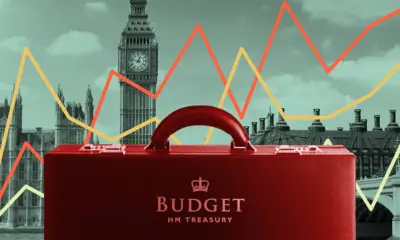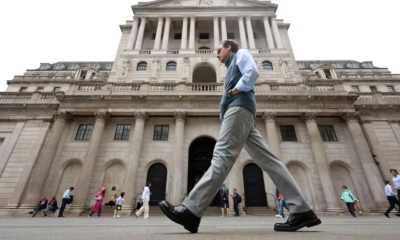News & Updates
Bank of England Holds Interest Rates at 4 Percent but Analysts See Signs of Optimism

The Bank of England has decided to keep its benchmark interest rate steady at 4 percent, a move that initially disappointed those hoping for an early cut but which economists say could signal growing confidence that inflation is finally under control. While the decision reflects caution about declaring victory too soon, analysts believe the tone of the Bank’s statement points to a gradual return to stability in the months ahead.
At its latest meeting, the Monetary Policy Committee (MPC) voted to maintain current borrowing costs, citing improved inflation data and early signs that price pressures are easing across key sectors of the economy. Consumer price growth has slowed more sharply than expected, with energy and food costs moderating after two years of volatility. The central bank said it will continue to monitor wage growth and service-sector inflation but acknowledged that the worst of the inflationary surge appears to have passed.
For households and businesses struggling with high borrowing costs, the pause may offer some relief even without a rate cut. Economists said holding rates steady allows the Bank to gather more data before acting, ensuring that inflation remains on a sustainable downward path. “The decision not to cut now is more about caution than pessimism,” one financial analyst noted, adding that “the Bank clearly sees an improving trend in inflation and does not want to disrupt that progress.”
The Bank’s outlook also highlighted signs of resilience in parts of the economy. Consumer spending, while subdued, has stabilised in recent months, and business investment has shown modest improvement as supply chains recover and input costs decline. The housing market, which cooled significantly earlier in the year, has also begun to show tentative signs of recovery as mortgage rates edge down from their peaks.
Governor Andrew Bailey said that while inflation remains above target, the Bank is encouraged by the latest data and will continue to balance the need for price stability with the risk of dampening growth. He described the current approach as one of “measured patience,” stressing that a sustained decline in inflation would open the door to future rate reductions.
Market reactions were mixed but generally positive. Sterling held steady while bond yields dipped slightly, suggesting investors interpreted the decision as a sign that the tightening cycle is nearing its end. Many traders now expect a possible rate cut at the December or early 2026 meeting if the downward trend in inflation continues.
Economists argue that maintaining rates at 4 percent allows policymakers to pivot from crisis management toward a period of consolidation. The Bank’s restraint is seen as an effort to engineer a “soft landing,” controlling inflation without triggering a deep recession.
In short, while the announcement brought no immediate relief for borrowers, it signalled cautious optimism. The era of steep hikes appears to be over, and the next phase for the British economy may finally be one of steady, manageable recovery.




















